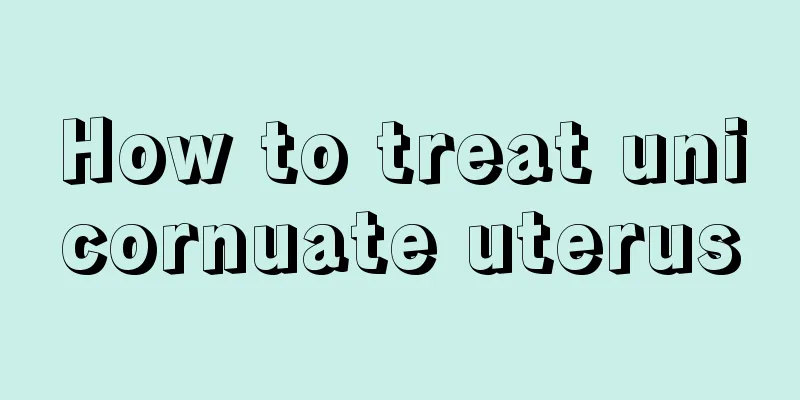Protect the pillar of the body - the cervical spine, and say goodbye to pain!

|
In modern society, more and more people are sedentary, and cervical spine problems are becoming increasingly serious. The cervical spine is the most vulnerable part of the 14 vertebrae in the human body. It is this part that provides stable support for the head and enables us to turn our head. However, due to long-term incorrect posture and living habits, cervical spine diseases are becoming more and more common. This article will provide you with basic knowledge about the cervical spine and provide some ways to protect the cervical spine. 1. Structure and function of the cervical spine The cervical spine is composed of seven vertebrae, connected to the skull at the top and to the thoracic spine at the bottom. It is not only a bridge between the head and the body, but also completes the rotation and forward and backward tilting of the head. The cervical vertebrae are connected by intervertebral discs and joints, forming a flexible structure that allows us to turn our heads freely. At the same time, the neck protects the spinal cord through the cervical canal and is a channel for the brain to transmit information to the body. 2. Common causes of cervical spine diseases ① Physiological changes in the cervical spine: With age, degenerative changes in the cervical spine can cause cervical disc diseases, such as disc herniation, cervical spinal stenosis, etc. These changes can lead to decreased stability of the cervical spine, making it more susceptible to external forces and causing pain. ② Abnormal neck posture: Maintaining an incorrect neck posture for a long time, such as looking down at a mobile phone, bending over for a long time to work, etc., will cause excessive stress on the cervical spine, causing cervical muscle fatigue and strain. In addition, long-term poor sitting posture is also a common cause of cervical spine diseases. ③ Neck trauma: When the neck is hit or twisted by external force, the ligaments, muscles and bone structures of the cervical spine are easily damaged, leading to cervical spine diseases. Common traumas include traffic accidents, sports injuries, falls, etc. ④ Excessive tension in the neck muscles: Long-term high-pressure working conditions or psychological stimulation can easily lead to excessive tension in the neck muscles, resulting in cervical muscle strain and abnormal cervical joint function. ⑤ Bad habits related to the cervical spine: Maintaining bad habits for a long time, such as staying up late, drinking alcohol, smoking, etc., will have a negative impact on the health of the cervical spine and increase the risk of cervical spine diseases. ⑥Other factors: Chronic diseases such as rheumatic diseases, blood diseases, metabolic diseases, etc. can also affect the health of the cervical spine and increase the risk of cervical spine diseases. 3. Symptoms and treatment of cervical pain Symptoms of cervical pain include neck pain, neck stiffness, headache, shoulder pain, etc. If the pain lasts for a long time, symptoms such as arm weakness and numbness of fingers may occur. Treatments for cervical pain include medication, physical therapy, and surgery. Commonly used medications include nonsteroidal anti-inflammatory drugs, analgesics, and muscle relaxants. Physical therapy can improve cervical pain and strengthen neck muscles through physical therapy, Chinese massage, and rehabilitation training. Surgical treatment is suitable for severe cervical diseases, such as cervical disc herniation compressing nerves and causing unrelieved pain. 4.How to prevent cervical spondylosis? ① Maintain a correct posture: Maintaining a correct posture for a long time, especially when working and studying, is an important way to prevent cervical spondylosis. When sitting, keep the natural curvature of the spine, and keep the head and neck upright without leaning forward or tilting too much. ② Moderate exercise: Moderate exercise can not only enhance the strength and flexibility of the neck muscles, but also improve the blood circulation in the neck. Common neck exercises include rotating the head, looking up and down, tilting left and right, etc. Performing moderate neck exercises can effectively prevent cervical spondylosis. ③Avoid maintaining the same posture for a long time: Maintaining the same posture for a long time will cause excessive tension in the neck muscles and easily lead to cervical spondylosis. If you need to stand or sit for a long time, you can take a proper rest, move your neck muscles, and relieve muscle tension. ④ Use your neck correctly: Using your neck correctly is also very important in daily life. Keep your neck in a natural position and do not use excessive force. Choose a suitable pillow when sleeping to reduce the pressure on your neck. When using electronic products such as mobile phones and tablets, keep your head up and do not lower your head for a long time. ⑤ Adjust the working environment: In the working environment, you should pay attention to adjusting the height and angle of the computer screen so that the neck and sight lines maintain a normal posture. At the same time, choose a comfortable chair and table to maintain a good posture for the whole body. ⑥ Maintain a normal weight: Being overweight may increase the load on the cervical spine and easily cause cervical spondylosis. Maintaining a normal weight helps reduce the burden on the cervical spine and reduce the risk of cervical spondylosis. ⑦ Regularly perform neck massage: Neck massage can relieve the tension of neck muscles, promote blood circulation, and is very effective in preventing cervical spondylosis. You can choose a suitable massager or seek help from a professional masseur. **Conclusion:** Cervical spine problems have become a common health problem for modern people, but as long as we pay attention to protecting the cervical spine and reasonably adjust our living habits, cervical spine pain will not be a problem for us. I hope this article can help you better understand the basic knowledge of the cervical spine and guide you to protect the cervical spine in daily life. Let us say goodbye to cervical spine pain and live a healthy life! Author: Tian Xiaobin Xingtang County People's Hospital |
>>: Dietary care for chronic glomerulonephritis
Recommend
How to cure sagging breasts?
Every woman has extremely high requirements for h...
Do I need to be fasting to take a pregnancy test at the hospital?
Some female friends do not pay attention to prote...
Signs of menstruation coming soon during lactation
After giving birth, women will have a period of u...
What causes tumors on the cervix?
Women need to pay special attention to their repr...
How many days of bleeding after abortion
Whether you choose surgical abortion or medical a...
Is the discharge of flesh in menstrual blood a blood clot?
Nowadays, many women with abnormal menstruation o...
What should I do if the suppository cannot be inserted?
Some gynecological diseases in women often bring ...
Leucorrhea pus cells 20
2+ pus cells in vaginal discharge is a factor of ...
Causes of yellow vaginal discharge
Women will have some excessive or insufficient gy...
These 4 types of people should pay attention, ophthalmologists remind them to check their eyes
In our daily life There is a "hero" who...
It's not mycoplasma pneumonia! It's contagious! A local disease control center released
The topic "Recent children's fever may b...
Early pregnancy deepening shows pregnancy
Early pregnancy refers to the period before 13 we...
What is the normal thickness of the endometrium during lactation?
The thickness of the endometrium varies at differ...
What does Down syndrome screening test include?
Pregnant women need to face many tests, and each ...
What are the symptoms of pollen allergy? What are the preventive measures for pollen allergy?
In our lives, we encounter many surprising and ha...









